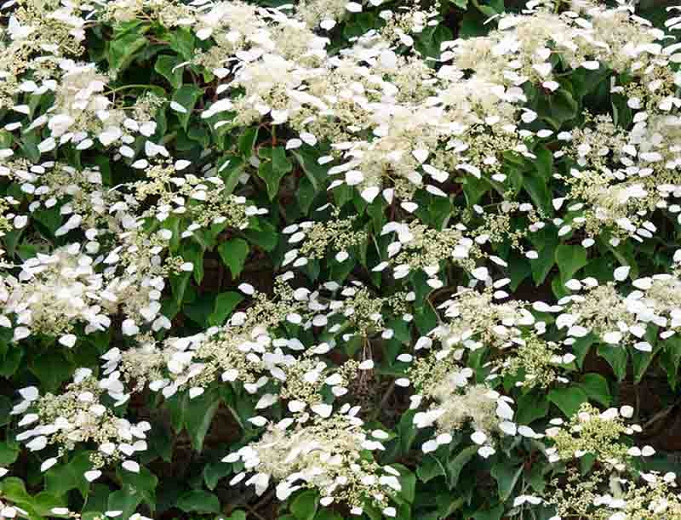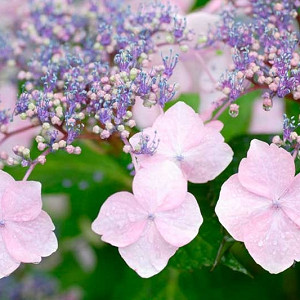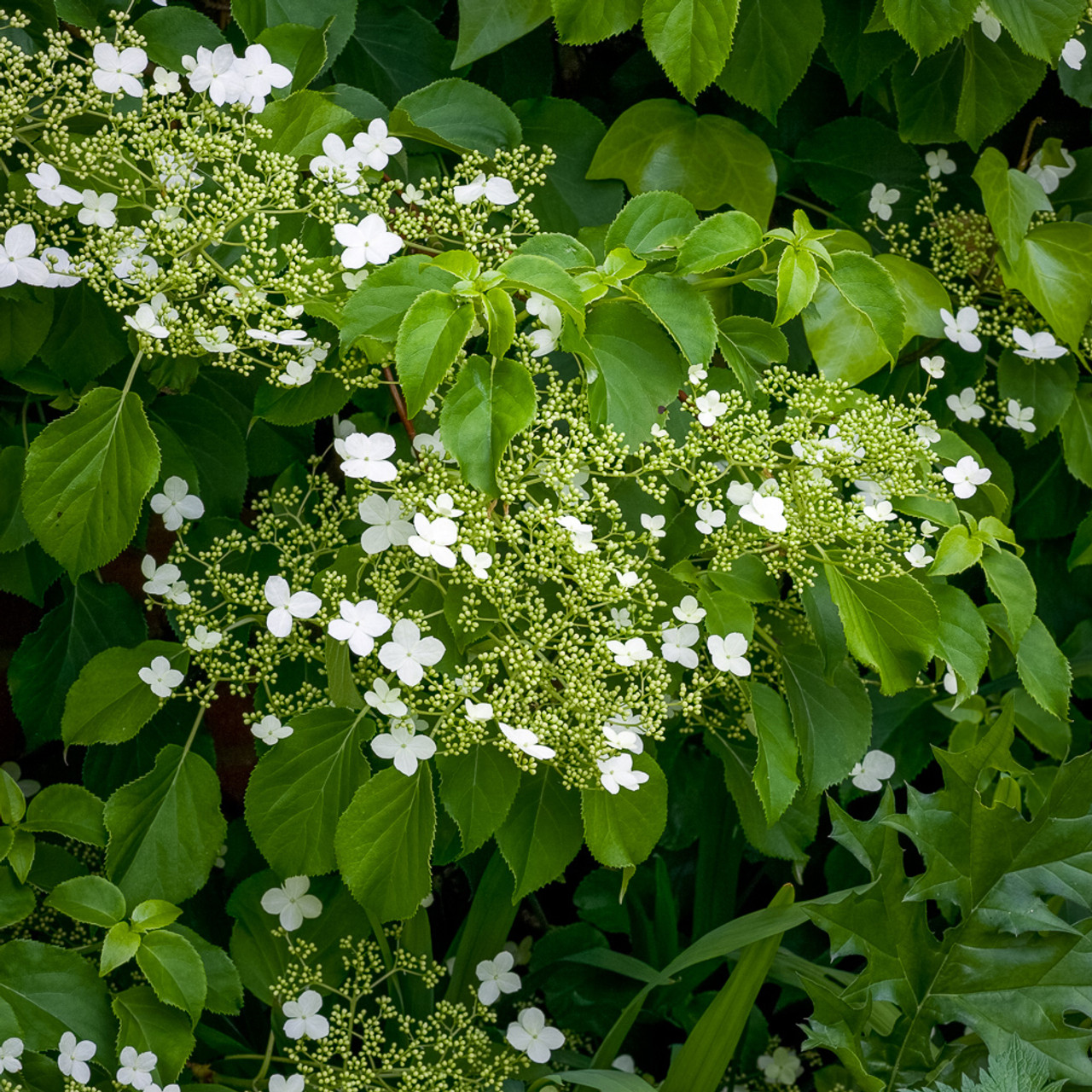Climbing Hydrangea: The Versatile Vine That Will
Climbing Hydrangea: The Versatile Vine That Will
Climbing hydrangea is a beautiful and versatile vine that can add a touch of elegance to any garden. It is native to Japan and Korea, and is hardy in USDA zones 4-9. Climbing hydrangea can grow up to 30 feet tall, and its stems are covered with aerial rootlets that help it to cling to walls, fences, and other structures.
The leaves of climbing hydrangea are glossy green and oval-shaped. In the spring, they are covered with clusters of white, lacecap flowers. These flowers are fragrant and attract butterflies and other pollinators. In the fall, the leaves turn a brilliant yellow before dropping off.
Climbing hydrangea is a relatively easy plant to care for. It prefers partial shade, but can tolerate full sun in cooler climates. It does not require a lot of water, but should be watered regularly during the summer months. Climbing hydrangea is also relatively pest- and disease-free.
There are many different ways to use climbing hydrangea in the landscape. It can be used to cover unsightly walls or fences, or to create a privacy screen. It can also be used to climb up arbors and pergolas, or to create a cascading effect over a wall or rock.
Here are some of the benefits of using climbing hydrangea in your garden:
- It is a versatile plant that can be used in a variety of ways.
- It is relatively easy to care for.
- It is pest- and disease-resistant.
- It blooms in the spring and fall, providing your garden with color all year round.
If you are looking for a beautiful and versatile vine to add to your garden, climbing hydrangea is a great option. It is easy to care for and will provide you with years of enjoyment.
Main Content
Here are some additional details about climbing hydrangea:
- Planting: Climbing hydrangea should be planted in the spring or fall. Choose a location that gets partial shade, but can tolerate full sun in cooler climates. The soil should be well-drained.
- Watering: Climbing hydrangea does not require a lot of water, but should be watered regularly during the summer months. Water deeply, so that the water reaches the roots.
- Fertilizing: Climbing hydrangea does not need to be fertilized often. A light application of fertilizer in the spring will help to promote flowering.
- Pruning: Climbing hydrangea should be pruned in the spring. Remove any dead or diseased branches, and trim back any branches that are growing too long.
- Winter care: In colder climates, climbing hydrangea may need to be protected from the cold. Mulch around the base of the plant to help insulate it.
Conclusion
Climbing hydrangea is a beautiful and versatile vine that can add a touch of elegance to any garden. It is easy to care for and will provide you with years of enjoyment. If you are looking for a new plant to add to your garden, I highly recommend climbing hydrangea.
Climbing hydrangea (Hydrangea anomala subsp. petiolaris) is a beautiful and versatile plant that can add year-round interest to your garden. It is a vigorous climber that can grow up to 60 feet tall, and it can be trained to climb walls, fences, or even trees. In the spring, it produces masses of fragrant white flowers that are held in flattened clusters. The flowers resemble lacecaps, and they are surrounded by a ring of showy white sterile flowers. In the fall, the leaves turn a golden yellow color, and the bark on the stems exfoliates to reveal a reddish-brown color.
If you are looking for a beautiful and easy-care climber for your garden, then climbing hydrangea is a great option. It is relatively pest- and disease-free, and it can grow in a variety of soil conditions. However, it is important to note that climbing hydrangea is a slow-growing plant, and it may take several years for it to reach its full height.
For more information about climbing hydrangea, I recommend visiting the . This website has a wealth of information about the plant, including its history, cultivation, and care. You can also find photos and videos of climbing hydrangea in bloom.
FAQ of hydrangea anomala subsp petiolaris
Question 1: What is Hydrangea anomala subsp. petiolaris?
Answer: Hydrangea anomala subsp. petiolaris, also known as climbing hydrangea, is a deciduous vine that can grow up to 30 feet tall. It is native to Europe and Asia, and is hardy in USDA zones 4-8. Climbing hydrangea has white or pink flowers that bloom in the summer. It is a popular choice for covering walls, fences, and arbors.
Question 2: How quickly does climbing hydrangea grow?
Answer: Climbing hydrangea grows relatively quickly, and can reach a mature height of 30 feet in 10-15 years. It is important to give climbing hydrangea plenty of room to grow, as it can become quite large.
Question 3: Where should I plant climbing hydrangea?
Answer: Climbing hydrangea should be planted in moist but well-drained soil in shade or partial shade. It is important to protect climbing hydrangea from strong winds, as it can be damaged.
Question 4: How do I care for climbing hydrangea?
Answer: Climbing hydrangea is relatively easy to care for. It needs regular watering, especially during hot, dry weather. It is also helpful to fertilize climbing hydrangea in the spring and fall. In the winter, climbing hydrangea can be pruned back to about 6 feet tall.
Question 5: Are there any pests or diseases that are common to climbing hydrangea?
Answer: Climbing hydrangea is susceptible to a few pests and diseases, including aphids, scale, and powdery mildew. These pests and diseases can be treated with insecticidal soap or neem oil.
Image of hydrangea anomala subsp petiolaris
5 different images of "hydrangea anomala subsp petiolaris" from Pinterest:
- A beautiful white hydrangea petiolaris cascading down a wall.

- A close-up of the flowers of a hydrangea petiolaris, showing their delicate pink and white petals.

- A full-grown hydrangea petiolaris, showing its lush green leaves and cascading flowers.

- A hydrangea petiolaris growing in a shady spot, its flowers blooming in shades of pink and blue.

- A group of hydrangea petiolaris plants, their flowers blooming in a variety of colors.

Post a Comment for "Climbing Hydrangea: The Versatile Vine That Will"